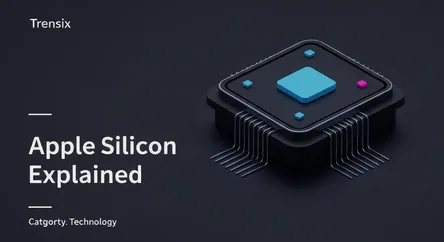Technology
Apple Silicon Explained

Discover Apple Silicon, Apple's custom ARM-based processors. Learn how these chips are revolutionizing Mac performance, battery life, and efficiency.
What is it?
Apple Silicon refers to the family of processors designed in-house by Apple, based on ARM architecture. This marked a major shift away from the Intel processors previously used in Mac computers. These custom chips, like the M1, M2, M3, and M4 series, are System on a Chip (SoC) designs, integrating the CPU, GPU, Neural Engine, and memory into a single package. This tight integration allows for faster communication between components and is a core reason for their impressive performance.
Why is it trending?
Apple Silicon is trending due to its groundbreaking combination of raw power and energy efficiency. Since the launch of the M1 chip, each new generation has set new benchmarks for laptop and desktop performance. The chips enable Macs to handle demanding tasks like video editing and 3D rendering with ease, all while delivering unprecedented battery life. This performance leap and the unified architecture across Apple's product line have generated significant buzz among tech enthusiasts and creative professionals.
How does it affect people?
For everyday users, Apple Silicon means faster, quieter, and longer-lasting MacBooks and more powerful iPads. The unified architecture allows for a seamless experience, enabling users to run iPhone and iPad apps directly on their Mac. This creates a more integrated and powerful ecosystem. For professionals, it unlocks new levels of performance for creative and computational work, making workflows smoother and more efficient, fundamentally changing expectations for personal computer capabilities.